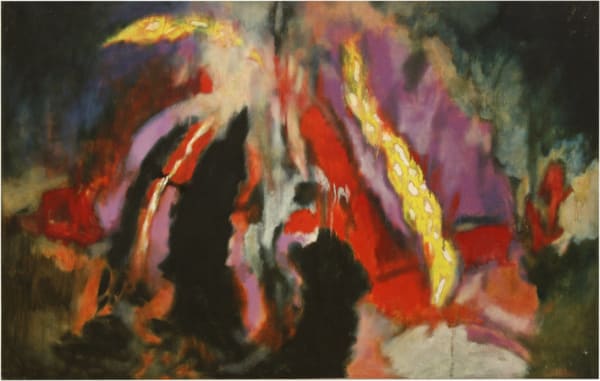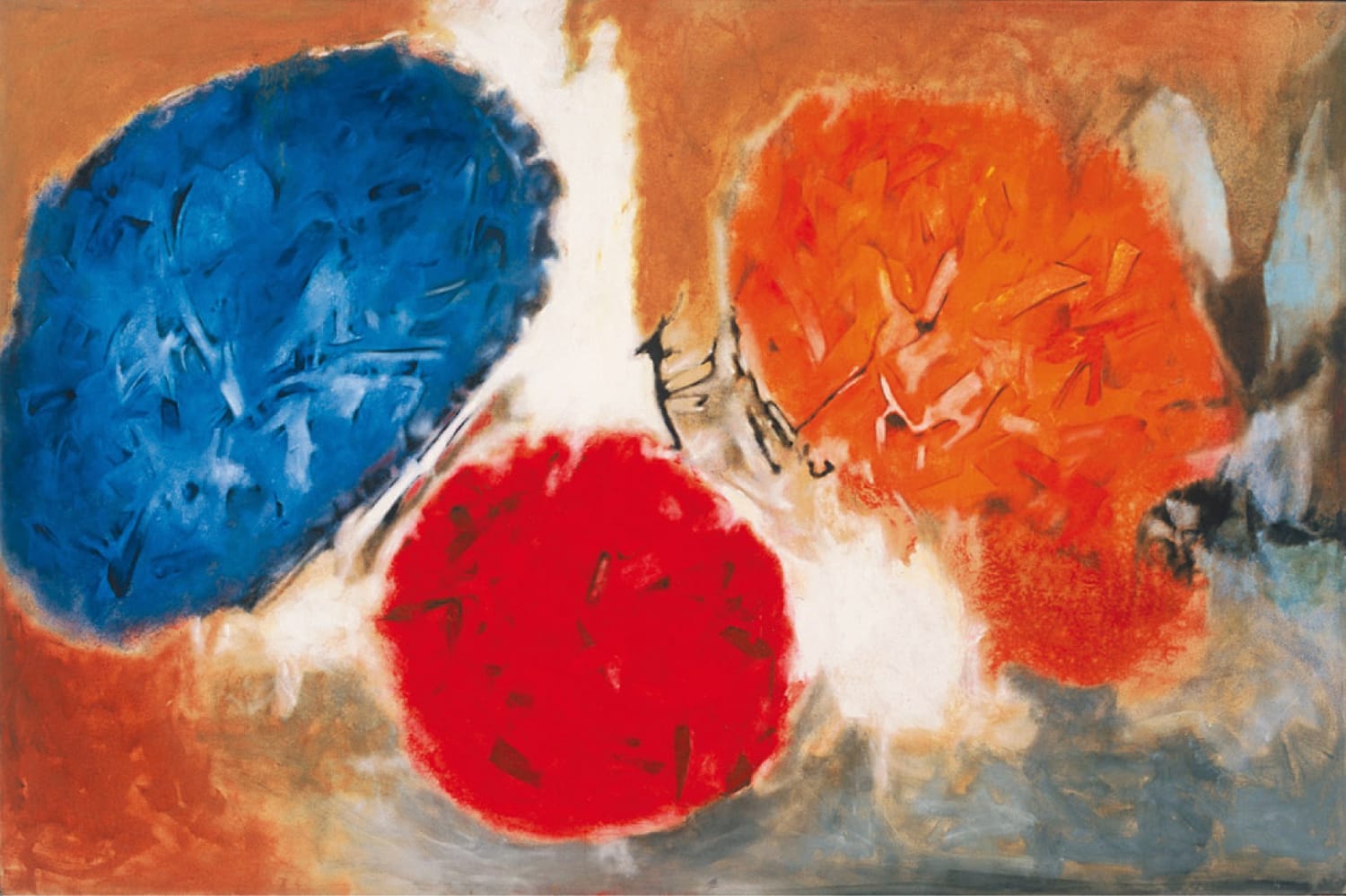Aubrey Williams: Shostakovich: Symphonies and Quartets
'The music of Shostakovich is humanity in sound.'
Aubrey Williams, 1986
Aubrey Williams's Shostakovich series was created in response to close listening, over a long period, to the symphonies and string quartets, of one of the greatest composers of the mid-twentieth century. Williams was in his mid-teens, an agricultural apprentice at a government college in Georgetown, Guyana, when he first heard the music of Shostakovich, a recording of Symphony No 1: '… he used a piano as just another instrument in the orchestra … and this music hit me really hard - I was hearing for the first time a sort of total sound … it had profound visual connotations - I could feel colour.' Something of the intensely kinaesthetic reaction of the young man to the music was carried into the ambition of the mature artist when, nearly forty years later, in 1980-1, in an astonishing burst of prolific creativity, he made the series of thirty Shostakovich paintings.
Williams was an erudite painter, deeply knowledgeable of European art and the theories of modernism: he was well aware of Kandinsky's ideas concerning colour and 'the spiritual in art', and of Baudelaire's idea that 'correspondences' can be discovered between the arts of music, poetry and painting. Williams had experimented for some time with the idea of using colour as the basis of formal equivalents but had not been happy with the results. Now, immersed daily in the sound world of the Russian composer, he set to work with a complete freedom from programme or premeditation.
For Williams, Shostakovich was universal in his creativity; his music had drawn so much from beyond the European tradition, from early Chinese, Indian, African music, from American jazz. It was a stupendous effort to bring into painting his passionate feeling for the music, and to convey in concrete terms something of its variety, its elemental power and its emotional structures. The outcome was a profoundly coherent body of work: - in response to Shostakovich's fifteen symphonies and fifteen string quartets, executed in less than two years - characterised by the most extraordinary variety and complexity of formal device, colour and spectacle. It was an astounding accomplishment, its scale and power matching anything in painterly abstraction made in the late twentieth century. Asked what he expected from his audience when they look at his work, Williams said, emphatically: 'To feel!' Confronted by these extraordinary paintings it is impossible not to feel an excitement that is both emotional and intellectual.
Text by Mel Gooding
Aubrey Williams (1926‐1990) was born in Guyana, where he spent his early years before studying at St. Martin's School of Art, London in mid-1950s. Following this Williams spent substantial periods of time working in studios in Jamaica and Florida, US. Williams' work has been exhibited both during his life and posthumously. Selected exhibitions include Walker Art Gallery, (2010, UK), Tate Britain (2007, UK), Whitechapel Art Gallery (1998, UK), Hayward Gallery (1990, UK), Guyana Museum (1990, 1970, Guyana) and others. His work is represented in a number of important international collections, including that of the Arts Council of England, British Broadcasting Corporation (UK), Tate Gallery (UK), Victoria & Albert Museum (UK), Contemporary Art Centre, (Kingston, Jamaica), Guyana House of Assembly (Georgetown, Guyana), National Collection of Guyana, Castellani House (Georgetown, Guyana), National Gallery of Jamaica (Kingston, Jamaica), Tuesday Magazine Boardroom (Chicago, USA).
Shostakovich: Symphonies and Quartets is organized in association with October Gallery, London.




